Modernizing the Freight Industry for a New Era
SECO is a long-trusted name in freight consolidation, best known for moving high volumes for big-name retailers. But after three decades focused on just one client, Target, they hit a turning point. To grow, SECO needed more than new business. They needed new tools. I led the design of a platform that reimagined how SECO operates, laying the groundwork for scalable growth and real-time visibility in a space where spreadsheets and legacy systems still ruled the road.
Wearing Many Hats: My Role in Shaping SECO’s Future
As a Product Designer, I was involved from day one. This was SECO’s first time working with an external design and dev team, so part of my role was technical, but a big part was human. I helped guide the process, build trust, and show what modern design could do. From mapping out legacy workflows to designing new digital tools, I worked closely with SECO’s Transportation Management team to translate their decades of experience into something flexible, scalable, and intuitive.
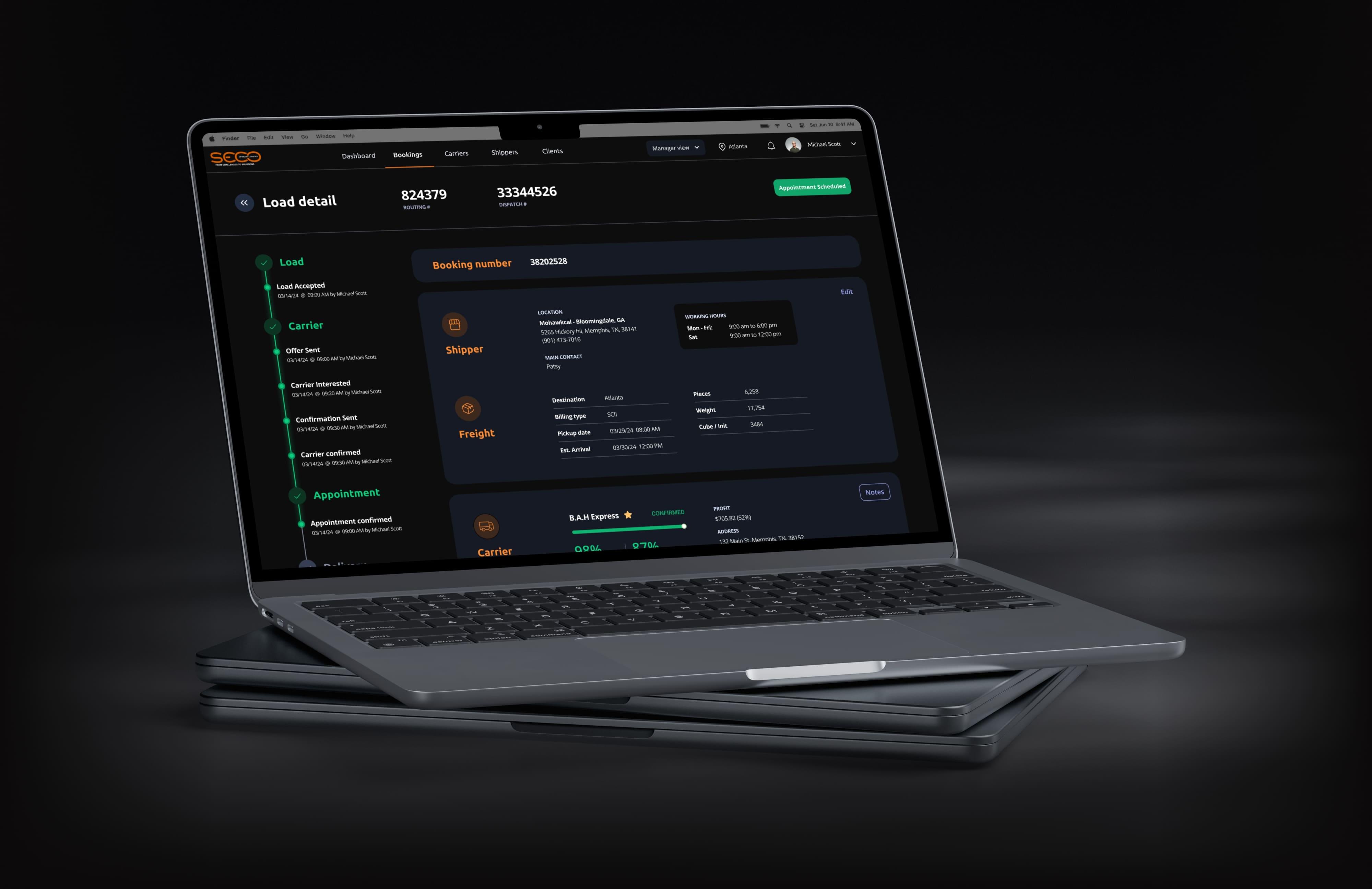
The Gap We
Aimed to Bridge
SECO’s operations ran on a highly customized AS400 system built specifically for Target, and only Target. It worked... until it didn’t. When it came time to grow and serve new clients, that same system became the bottleneck. It wasn’t built for flexibility, and teams didn’t have the tools they needed to manage freight dynamically.
This wasn’t just about updating software, it was about helping a company evolve its mindset. SECO needed a system that could support where they were headed, not just where they’d been.
My Contribution
to Their Mission
We kicked things off with a deep dive into SECO’s day-to-day. I sat with the Transportation Management team, walked through their workflows, and studied the friction points in their current tools. The goal was to uncover what was slowing them down, and what could unlock their next chapter.
Rigid Tools for a Changing Market
Their systems were built entirely around one client. Onboarding new ones required manual workarounds, and a lot of patience.
Workforce Planning Without Visibility
Teams lacked a centralized way to manage staffing or adapt to demand. Last-minute changes were common, and costly.
Legacy Infrastructure Bottlenecks
The AS400 system had no modern UI, limited integration options, and couldn’t keep up with the needs of a multi-client operation. We had to design around its constraints while setting a path for its eventual replacement.
Bridging the Digital Literacy Gap
This was SECO’s first time outsourcing design and development. I introduced concepts like wireframes, sprints, and user testing, helping them feel more confident, informed, and involved in the process.
Clarifying Communication and Expectations
Part of my job was translation, turning technical decisions into business language, aligning expectations, and helping teams work together across disciplines.
These insights shaped a user-centered approach rooted in SECO’s reality. We didn’t just ask “What’s possible?”, we asked “What’s useful right now, and what can grow with you later?”
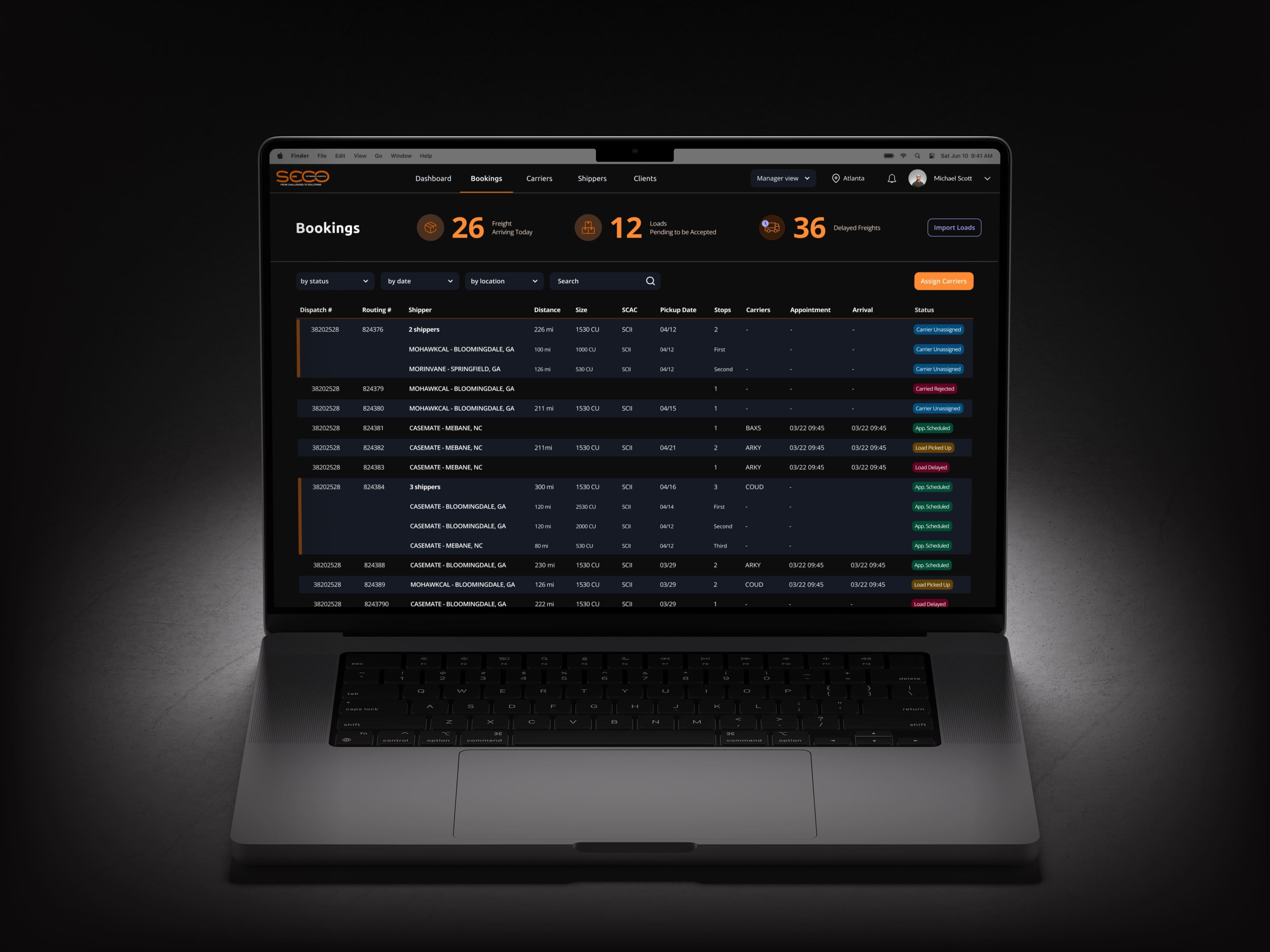
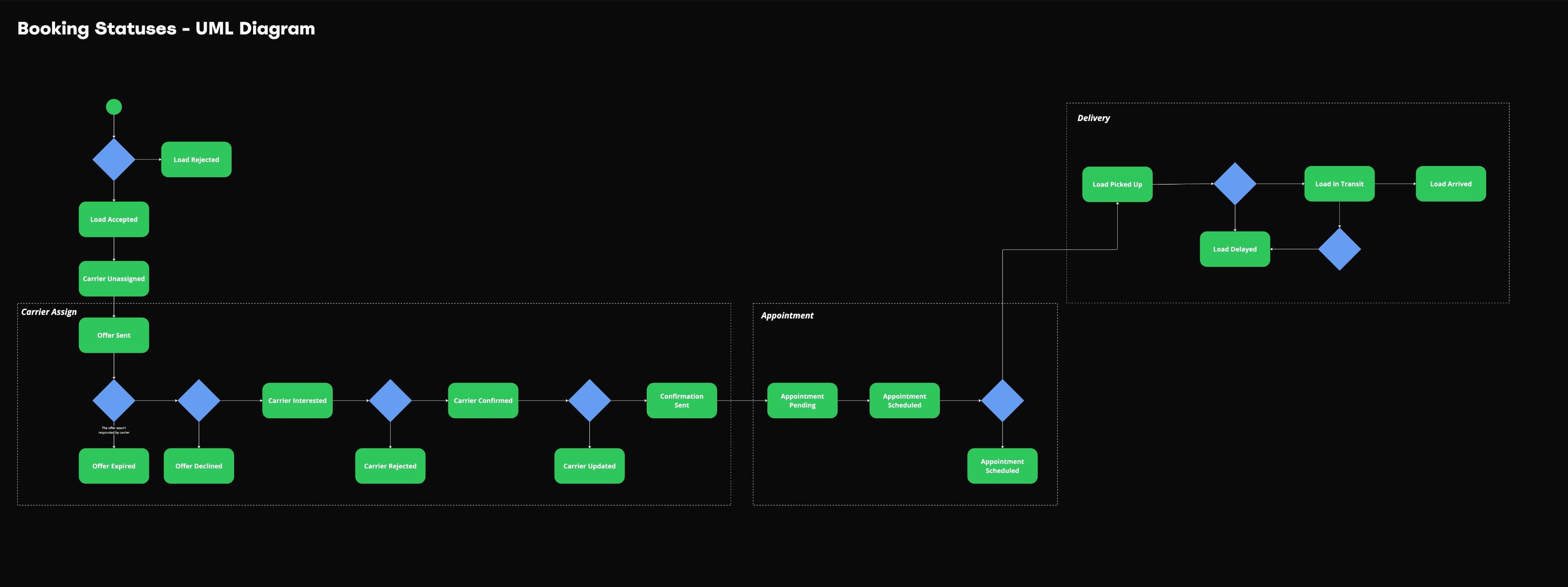
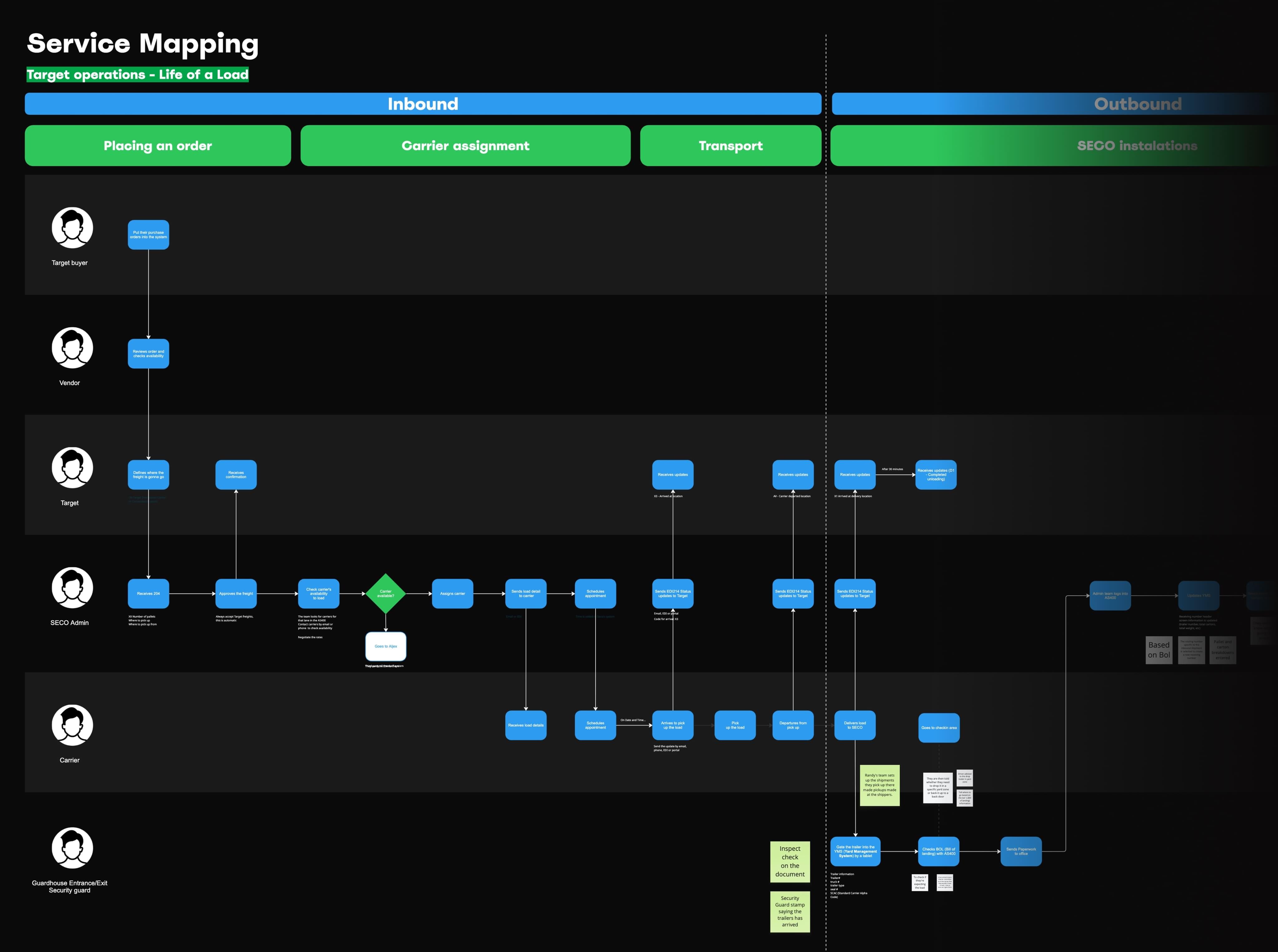
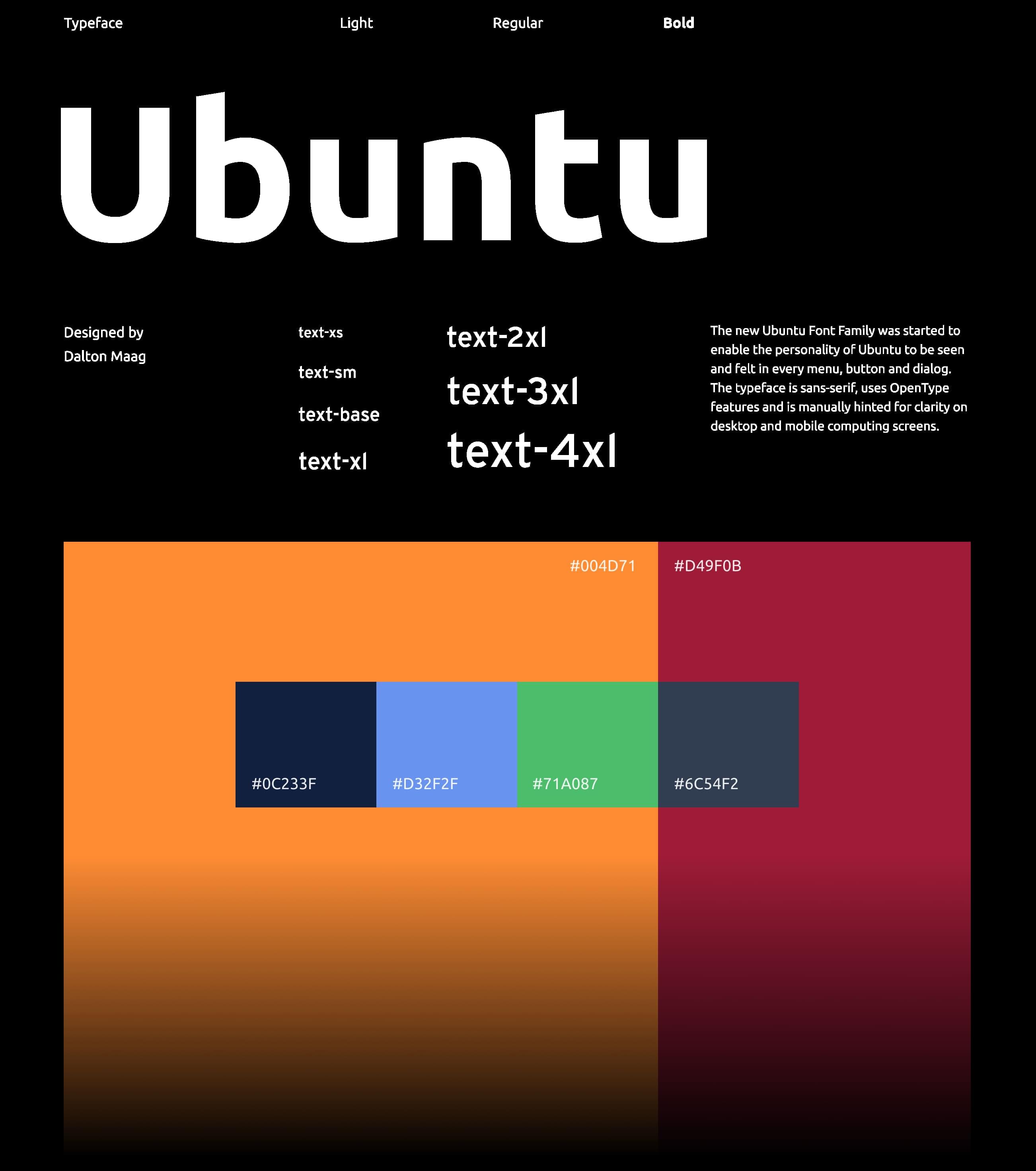
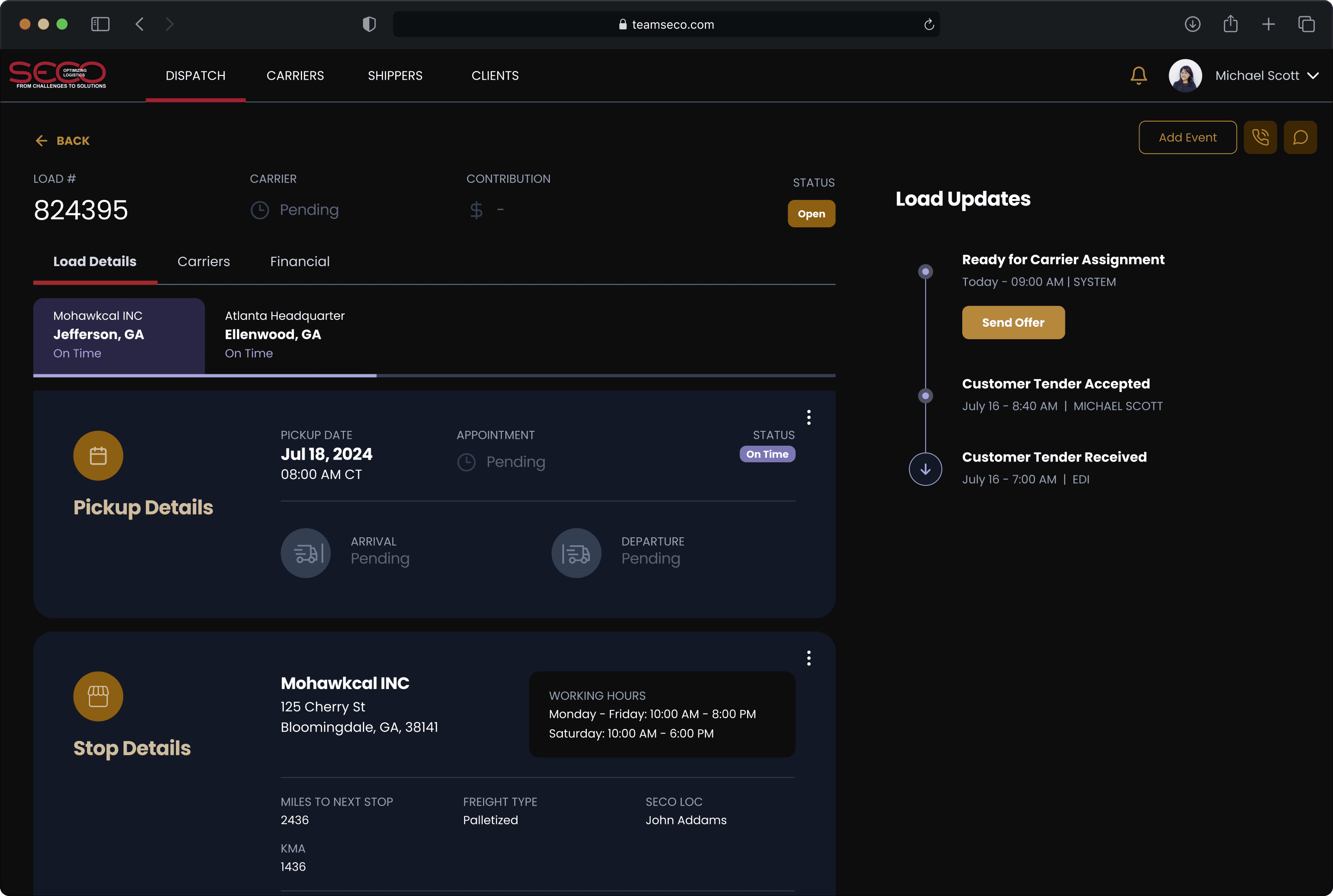
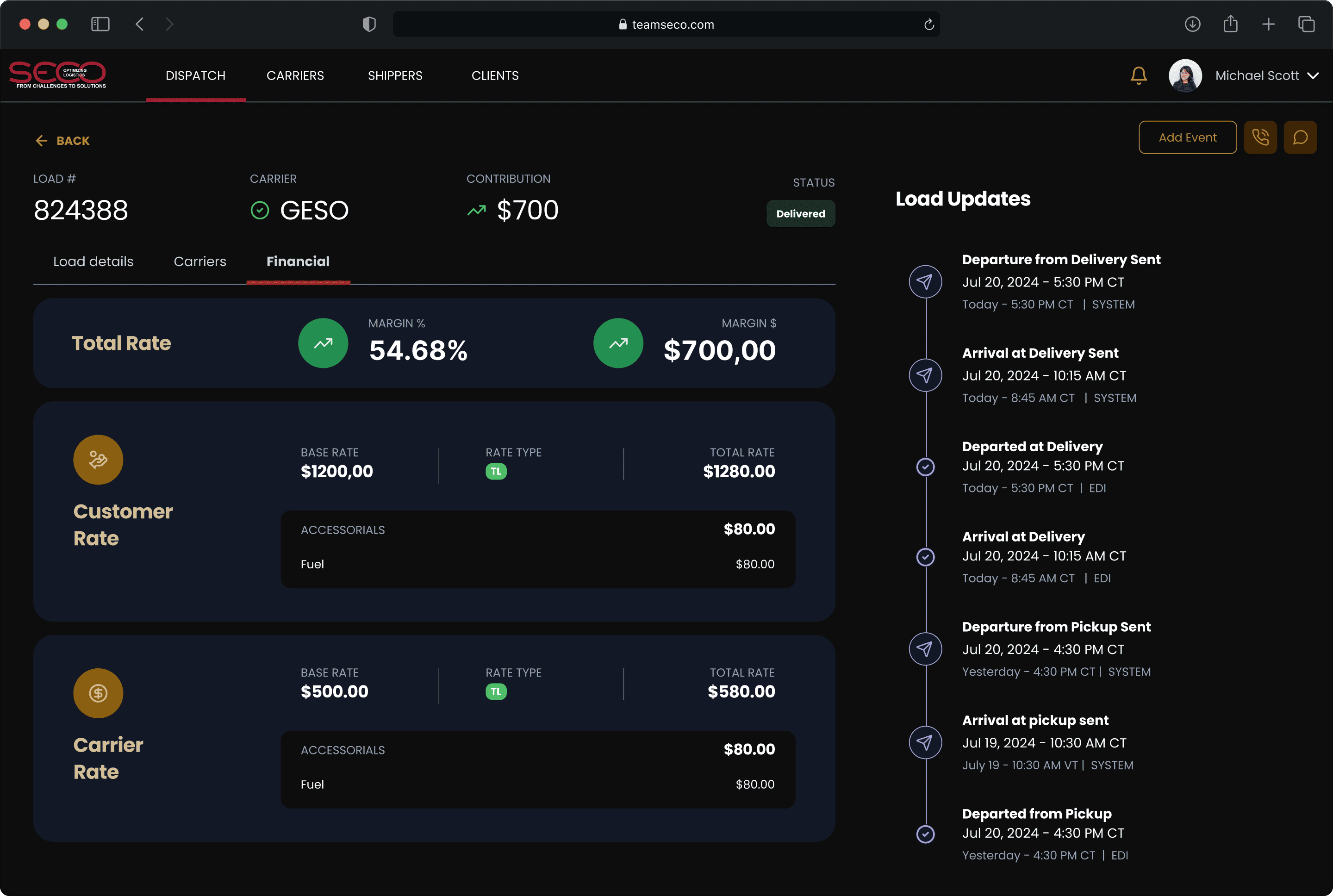
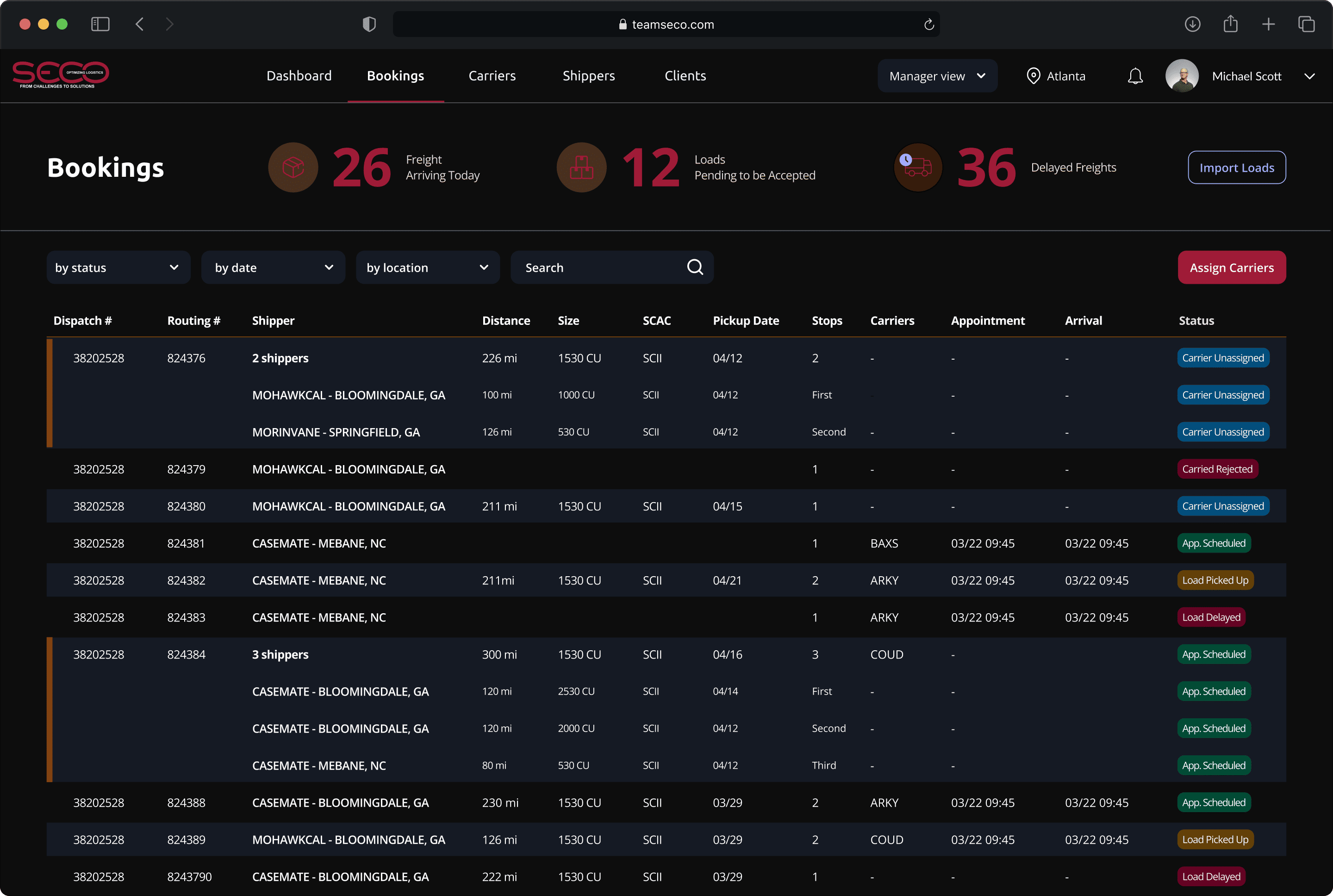
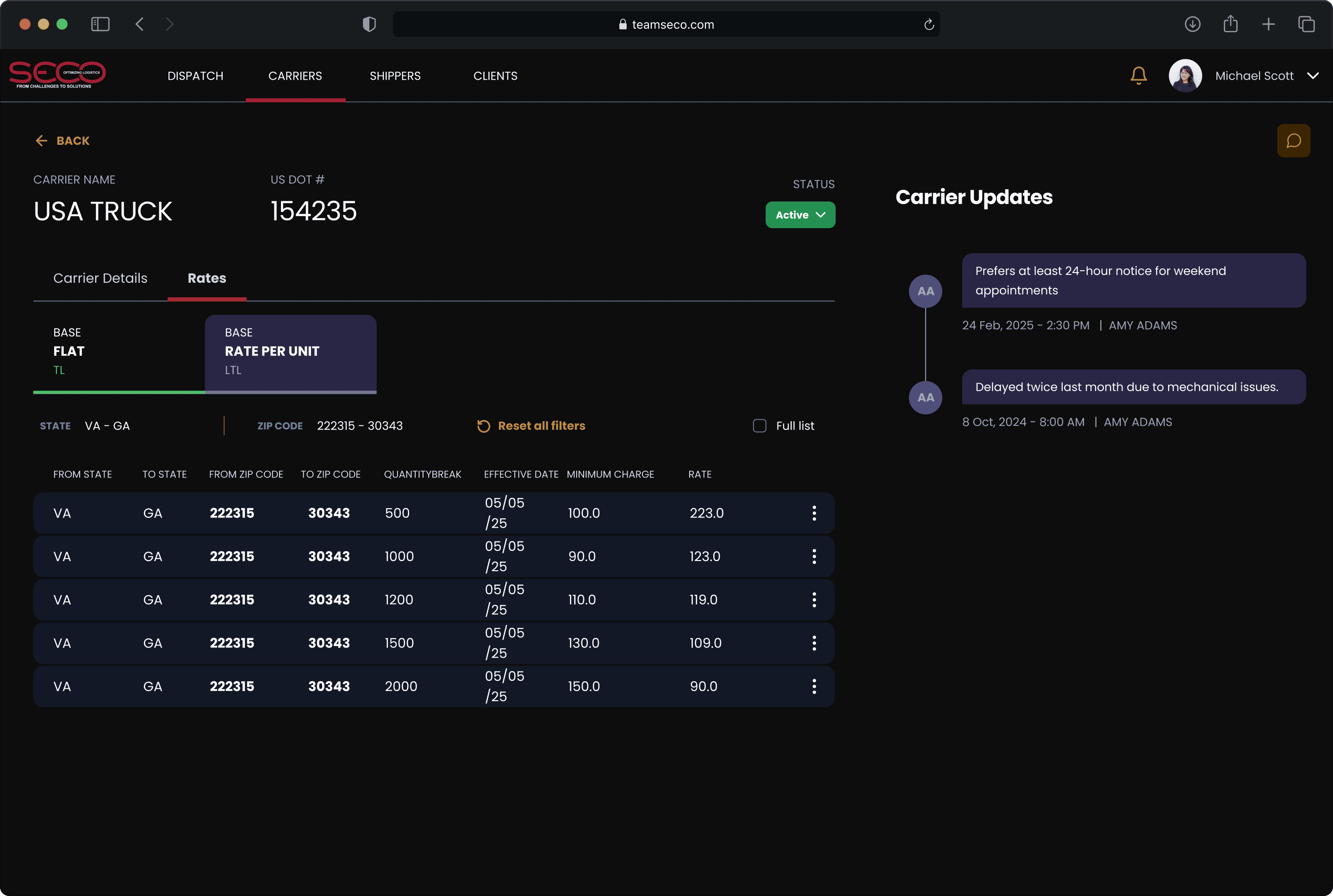
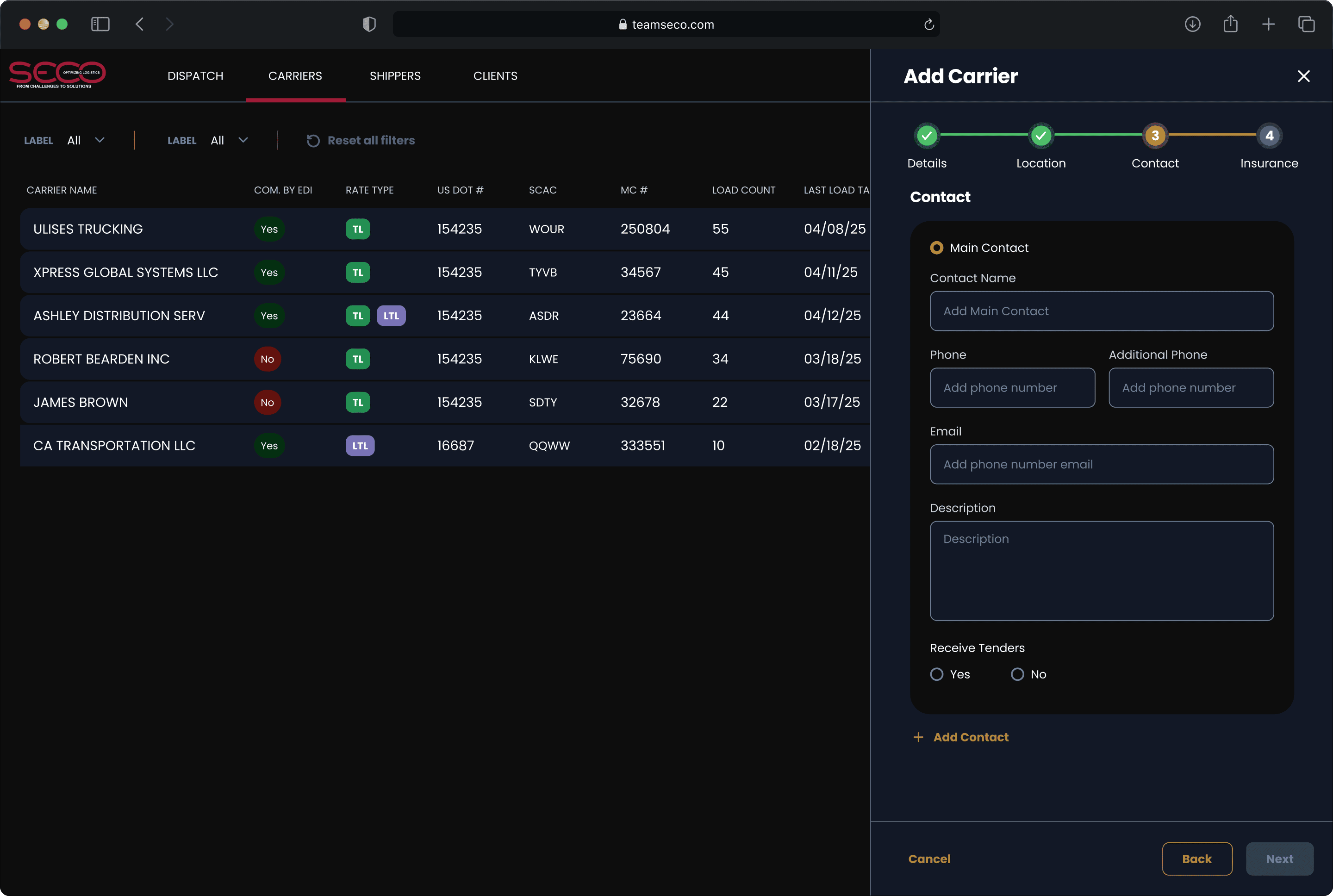
What This
Project Delivered
For People. The Transportation Management team finally had tools that matched the way they actually work. With clearer interfaces and better structure, they could assign loads faster, reduce manual effort, and make smarter decisions with confidence.
For the Business. The redesign unlocked SECO’s ability to grow without adding overhead. What used to be rigid, legacy-bound systems became a flexible, centralized platform that could support new clients, new workflows, and a more scalable future.
For Me. This project pushed me to go beyond product design, stepping into facilitation, education, and deep systems thinking. I didn’t just help build better tools; I helped guide a team through change. It was a reminder that good design isn’t just about what’s on screen, it’s about how people get there together.